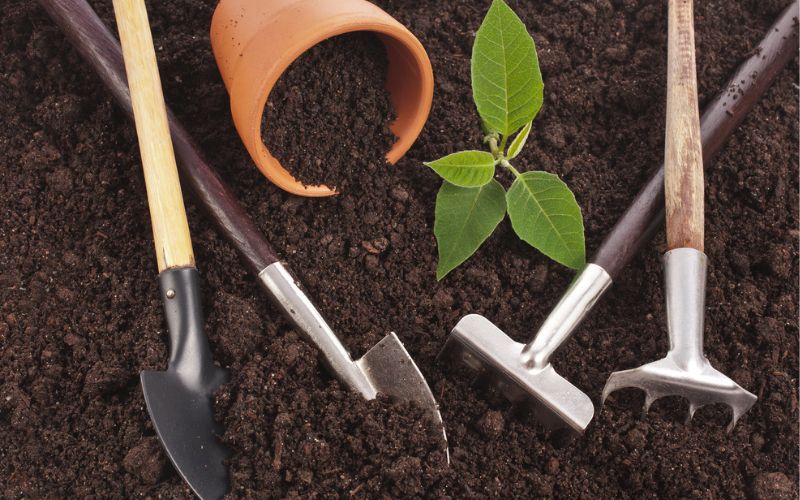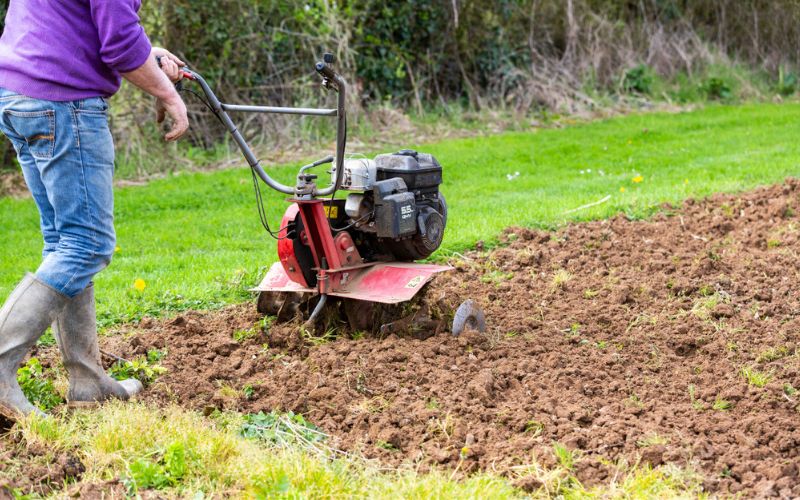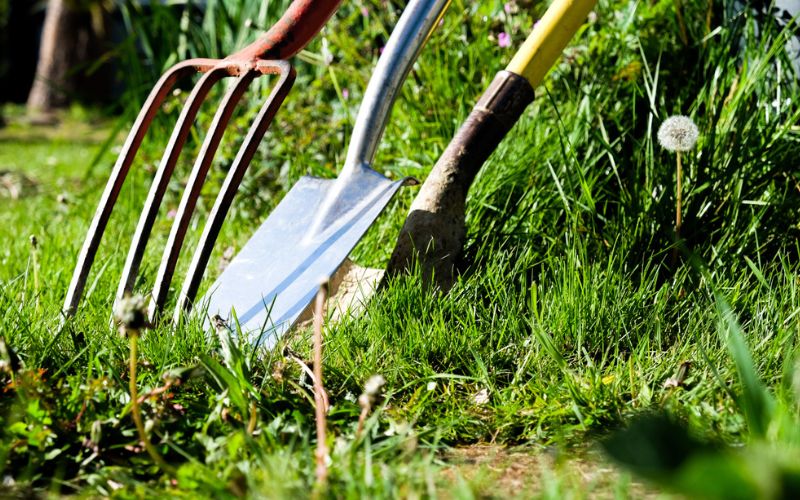
As Canadian gardeners, we’re no strangers to the challenges that come with clay soil. It’s a common soil type across the country, known for its water-retention capabilities and nutrient-rich composition. However, it can be quite a task to work with, especially when it comes to breaking it up for planting. But don’t fret, fellow green thumbs! This article will guide you through the best tools to transform your clay soil garden into a thriving oasis.
Understanding Clay Soil
Clay soil, when treated correctly, can be the most fertile, organic soil on the planet. It’s a fantastic source of nitrogen for plants, but it does require more water than other soils. To get the most out of clay soils, you’ll need to water deeply at least three times a week, and continue watering whenever you see that the soil is starting to dry out.
Breaking Up Clay Soil: The Rototiller
The rototiller is a powerful tool that can break up clay soil in minimal time, making it more suitable for planting. The best way to use a rototiller is to work it through the soil in a single direction, turning it over and working the soil at least 2-3 times to break it up.
Alternative Tools for Clay Soil
While a rototiller is highly efficient, there are other garden tools you can use to break up clay soil. Among them are a wide-bladed shovel, a standard pick, a hoe, or a garden fork. These tools require a bit more elbow grease, but they can also effectively break up clay soil into small pieces.

Pros and Cons of Using a Rototiller
A rototiller is a powerful tool that can significantly ease the process of breaking up clay soil. However, like any tool, it has its pros and cons.
Pros
Efficiency Rototillers excel at breaking up stubborn clay soil, making it more manageable for planting.
Versatility They can be used in various weather conditions and for different tasks, such as mixing in soil amendments.
Time-saving For large gardens, a rototiller can save significant time compared to manual tools like spades or forks.
Cons
Cost Rototillers can be expensive to purchase, especially high-end models. Renting can be a more cost-effective option for short-term needs.
Weight Their heavy weight can make them difficult to maneuver, particularly in tight spaces or for those with physical limitations.
Soil Disruption While effective at breaking up soil, rototillers can disrupt soil structure and harm beneficial soil organisms, potentially leading to soil compaction and erosion.
Maintenance Regular maintenance, including cleaning, oiling, and part replacement, is required to keep a rototiller running efficiently, adding to its overall cost and effort.
Essential Tools for Working with Clay Soil
Let’s delve deeper into some of the essential tools for working with clay soil:
D-handle Garden Spade Ideal for edging beds and cutting through the soil easily. Its flat blade allows you to dig to a uniform depth, making it perfect for double digging, a technique often used in clay soils.
D-handle Garden Fork Versatile and can be used to loosen, cultivate, and aerate the soil, mix soil amendments into the surface of a bed, break up large clumps of soil, and prepare planting holes for perennials.

Cultivating Fork Works like a muscle-powered rototiller. It can quickly plow through the soil, dislodging weeds, breaking up compacted surface soil, loosening, mixing, and generally getting a bed ready for planting.
Deep Spader When you need to loosen the soil deeply, deeper than you can go with the garden fork, the deep spader comes into play. It’s built to penetrate tough soils easily, even those that haven’t been deeply cultivated before.
Level-head Rake Used to finish a bed, give it a final shape, smooth its surface, and pulverize or rake away any large dirt clods. This gives a fine surface for broadcasting seeds or transplanting.
Improving Clay Soil
Improving clay soil isn’t just about breaking it up. It’s also about adding organic material to enrich it and improve its structure3. Here are some steps to improve your clay soil:
Avoid Compaction Clay soil is susceptible to compaction, which can lead to poor drainage. To Avoid this, never work the soil while it is wet and try to avoid walking on the soil whenever possible.
Add Organic Material Adding organic material to your clay soil will improve its structure and fertility. Use compost or materials that compost quickly, such as well-rotted manure, leaf mold, and green plants. Place about 3 to 4 inches of the chosen soil amendment on the soil and work it gently down into the soil about 4 to 6 inches.
Cover with Organic Material Cover areas of clay soil with slower composting materials such as bark, sawdust, or ground wood chips. As they break down, they will work themselves into the soil below.
Grow a Cover Crop In colder seasons, plant cover crops like clover, timothy hay, hairy vetch, or borage. The roots will grow into the soil and act like a living soil amendment. Later, the whole plant can be worked into the soil to further add organic material.
Remember, amending clay soil isn’t an easy task, nor is it quick. It may take several years before your garden’s soil has overcome its issues with clay, but the end result is well worth the wait. If you’re looking for a quicker solution, consider building raised beds and filling them with high-quality soil. This will give you a head start while the soil in the raised beds works its way into the ground below.
Conclusion
Working with clay soil can be a challenge, but with the right tools and techniques, it can be turned into a gardener’s dream. Whether you’re using a rototiller, a D-handle garden spade, or a cultivating fork, remember that the key to a successful garden lies in understanding and working with the soil you have. With patience, persistence, and the right approach, you can transform your clay soil garden into a thriving oasis of greenery.
Colin Macmillan is a seasoned entrepreneur and the CEO of Riverwood Landscape, a leading landscaping company based in Canada. He has been at the helm of the company since leaving high school, demonstrating his strong leadership skills and business acumen.
Colin’s expertise lies in various aspects of landscaping, including lawn care, interlocking, sod installation, and commercial maintenance. His hands-on approach and dedication to the craft have been instrumental in building Riverwood Landscape into a reputable brand.
One of his most notable achievements is the creation of a successful landscape franchise that services multiple locations. This accomplishment underscores his strategic thinking and ability to scale operations effectively.
Colin has also had the privilege of working with Guelph Hospital for landscaping and maintenance, a testament to the trust and reliability that his company has earned over the years.
His professional mission is to offer the best services and experiences for customers, a goal that he tirelessly pursues. Colin’s commitment to excellence and customer satisfaction continues to drive the growth and success of Riverwood Landscape.








